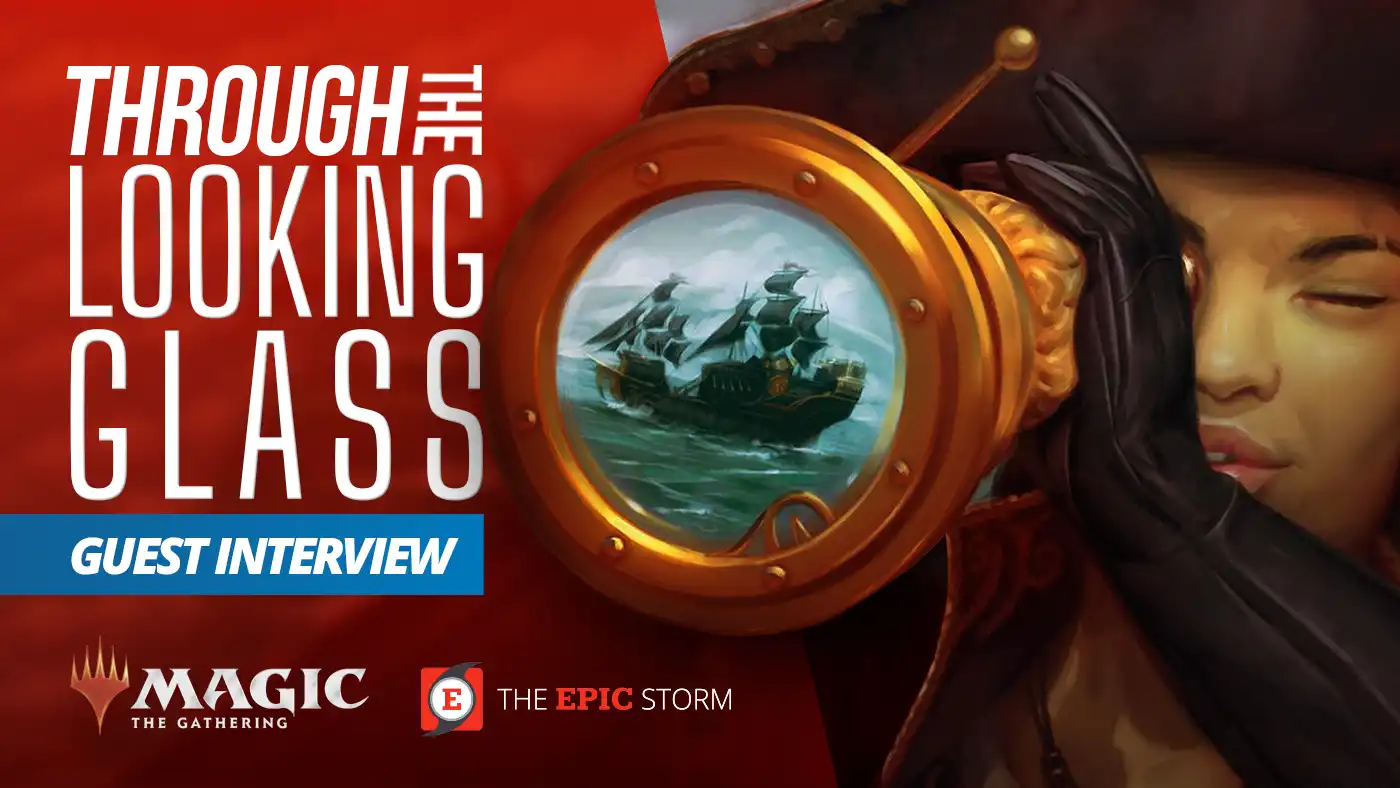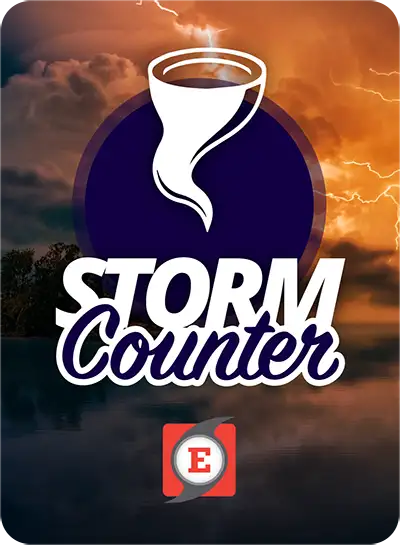
Special Guest
A few words on Peter van der Ham:
(Twitter: @PVDH_Magic | MTGO: Maraxus_of_NL)
Peter "PVDH" van der Ham, from the small town of Gorinchem in the Netherlands, has been playing Magic the Gathering since 1999 and Legacy competitively since 2007. While a big aficionado of casting free blue spells and closing out a game in quick succession, he can be found wielding a wide variety of decks. This is partly due to a preference for theory crafting rather than jamming games. After playing many national tournaments and Grand Prix with reasonable success over many years, Peter has since expanded his engagement with the game to writing set reviews of new releases of the Legacy format. As well as occasionally playing exciting new cards online or on webcam matches to share with a small Youtube audience. With regard to his experience playing against Storm, it is notable that the Dutch Legacy team from Nijmegen was a Storm-only team that attended all the bigger national events and would show up in force for many years. This was one of a handful of teams that made up the Dutch Legacy landscape of the time, and one of the main competitors to the team, Peter, has long been a part of. Many Dutch competitive players that have been around for a long period have been forged in these fires of Storm dominance, leaving us committed to never leaving home without a solid plan against this roaring menace.
Storm-based combo decks are among the better matchups for Initiative. The combination of disruption pieces, a quick clock, and fast mana will ask strong questions of the Storm player. While The EPIC Storm does take the faster approach and is therefore a bit scarier than some others, Initiative should generally have the time to resolve its first disruptive piece and close out the game.
It's night and day really, but most importantly, speed. While Death & Taxes does typically have access to [[Deafening Silence]] post-board, the critical turn against D&T is their turn two as that's the turn they get to resolve [[Thalia, Guardian of Thraben]], [[Ethersworn Canonist]]; and the like. This means that any hand that can combo-off before that is likely good enough and adds a ton of predictability to the matchup. This also means that the Storm player gets the opportunity to [[Thoughtseize]] their disruptive pieces on the draw. The fact that most Death & Taxes decks are [[Yorion, Sky Nomad]] based also telegraphs what they are up to a significant amount, allowing the Storm player to mulligan accordingly. These [[Yorion, Sky Nomad]] decks also result in a lower density of interactive pieces for the Storm player to contend with. Furthermore, Death & Taxes often gives the Storm player quite some time to get rid of or find a win around their disruptive piece; while cards like [[White Plume Adventurer]] close the game in short order.
(adsbygoogle = window.adsbygoogle || []).push({});
The best hands in the blind would be those that cast a take the initiative creature on turn one as well as a [[Chalice of the Void]] on zero, or a [[Thalia, Guardian of Thraben]] on turn one with a “take the initiative” creature on turn two. Both of these are effective against Storm, but might be something that certain Initiative pilots may push for more or less. More broadly, the hands Initiative should keep include any that cast one of the non-mana cards on turn one. Though Initiative should mulligan six or seven cards hands where their first play doesn't have a follow-up against [[Force of Will]] or after a [[Thoughtseize]]. If a hand contains both a disruptive piece (e.g [[Thalia, Guardian of Thraben]]; [[Elite Spellbinder]]) and an initiative card to cast, they are most likely to lead on the disruptive piece. This equates to the deck opening up on a disruptive games piece about two-thirds of the time. The exception here is the ideal hand as stated above where I would personally recommend starting on an initiative piece plus a [[Chalice of the Void]] on zero when possible rather than leading on [[Chalice of the Void]] on one. This is due to the immense power of an early [[White Plume Adventurer]] against any but the most unfair decks.
In all but the most beautifully put-together hands, a Initiative hand that doesn't have fast mana is a mulligan. This means that you should assume that they will always have at least a mana artifact or a Sol land in their keep, and you should expect them to have a turn one play if they keep on six or seven.
On the draw we get some information to work with, so that part is hard to answer. On the play, I believe that leading on a [[Chalice of the Void]] on one rather than a [[Thalia, Guardian of Thraben]] is the way to go. This is mainly influenced by the deck's desire to keep a one-mana creature off of the battlefield. If the debate is between a disruptive three drop and a two drop the player should generally lead on the three drops, from a mana efficiency and likelihood to follow-up through a [[Wasteland]] stance.
The main goal of the Initiative strategy is to just get the opponent down to zero life. What the Storm player should realize is that a [[White Plume Adventurer]] is a three-turn clock on its own. That is the same closing speed as a [[Goblin Rabblemaster]], which leaves little time to interact and set up the right hand. Alternatively, as many of the disruptive pieces are on small creatures; resolving a couple of layers of disruptive elements can be strong enough to attack the opponent down in smaller bits.
This would be a tough one to call in general but, where applicable, the primary function would be to focus on the Storm players' interaction with other disruptive pieces as this forces them to generate the extra mana through your other disruption to get out from under those in the first place. If no other disruption is present, it should ideally go after spell-based mana sources or cantrips. These are basically the effects that can't be played out earlier, thereby removing the two mana tax on the critical turn. In the case of cantrips, could mean that they just don't have time to cast it as the Initiative deck can force an early combo turn.
The most powerful thing The EPIC Storm can do is win before our first turn begins. This includes going for a turn one [[Echo of Eons]] as Stompy decks are generally not the most consistent with random hands. Other than that, any hands that can largely ignore some of our mainboard disruptive pieces, such as hands with enough mana to win through [[Thalia, Guardian of Thraben]] or those that can ignore a [[Chalice of the Void]] on one (which is more likely in game one than on zero).
(adsbygoogle = window.adsbygoogle || []).push({});
I believe that [[Empty the Warrens]] is only effective if cast on turn one in which case an [[Empty the Warrens]] for eight Goblins or more should surely be enough to close out the game. This is especially true post-sideboarding. Later than that, there are too many opportunities for the initiative deck to punch through and race the Goblins, a major player here would be [[Seasoned Dungeoneer]] making the Initiative threats unblockable or just the general density of creatures in the Stompy deck.
The Initiative sideboard plan is a pretty straightforward case of taking out creature removal, notably [[Solitude]] and [[The Wandering Emperor]]. This means there is room for bringing in [[Loran of the Third Path]] to take out any artifacts that are played out early and bringing in [[Aven Mindcensor]] to hit on tutor effects and fetch lands. The obvious bunch of [[Mindbreak Trap]], [[Deafening Silence]], and [[Thorn of Amethyst]] are obviously coming in. [[Leyline of the Void]] comes in at small numbers if that's in the sideboard rather than [[Faerie Macabre]], as the latter doesn't stop [[Echo of Eons]] lines.
I believe [[Chalice of the Void]] becomes less reliable in the subsequent games, but I don't believe our general strategy changes by much. Disruptive pieces and a solid clock are still the name of the game. While they are unlikely to be fond of them in the first place, the Initiative player becomes even less likely to keep hands that are slow.
The mulligan strategy changes from looking for turn-one plays with any decent follow-up (which includes [[Solitude]] or [[The Wandering Emperor]]) to having a disruptive piece with any decent follow-up. For example, this means that early take-the-initiative creatures are still very powerful, but can't be kept without a potent disruptive piece if they are on high card counts.
Thinking they have time to set up their hand and deal with disruptive pieces and/or over-sideboarding and slowing themselves down. At the end of the day the Initiative deck can take the Moon Stompy approach of just putting on a very fast clock, and you don't want to be caught with your pants down when the first [[Seasoned Dungeoneer]] comes knocking.
I think that the addition of Initiative to the format would be a net negative for The EPIC Storm. I expect it to take away from the metagame share of Moon Stompy and Death & Taxes - both of which I believe to be significantly better matchups for The EPIC Storm. That being said, the current deck lists of Initiative are still highly in flux, and some other lists do not include [[Chalice of the Void]] in their main deck. This means that there might be a bit more breathing room in the early game. It will be interesting to see where the meta share of these white Stompy variants ends up, and whether it will be worth planning for in the preferred build of the Storm deck variants. I want to thank The EPIC Storm team for inviting me to give my insights into this particular match-up. And hope that it has been an educational and/or entertaining read. Our build of the Initiative decks has been developed by myself together with my best friend and testing partner Kasper Euser. I also want to give a shout-out to the many other individuals and testing groups that have been working on the Initiative variants to take on the Legacy format. People can find me on social media at PVDH_Magic, such as on Twitter and Youtube where I share my set reviews and gameplay content respectively.
I would like to take a moment to thank Peter van der Ham for joining Through the Looking Glass and providing some spectacular responses on the Initiative versus The EPIC Storm match-up.
Until next time, keep storming!










